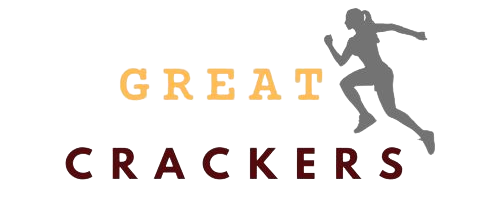4 Types of Communication in the Workplace (Ease to Understand)
Good communication is the foundation of any successful workplace. In today’s world, where businesses are moving at lightning speed and are increasingly global, strong communication skills are essential to succeed in your career.
The National Association of Colleges and Employers revealed in a study that communication skills are the most desired quality in job applicants.
That’s why we’ve created this blog post to delve into the different types of workplace communication, such as verbal, non-verbal, written, visual, formal, and informal communication.
So, knowing these types of communication can empower you to communicate well. Even as you achieve your career goals.
Types of Communication in the Workplace
Many think there are only three types of communication in the workplace; verbal, written, and non-verbal. But in reality, you better understand communication types based on four main classifications:
- Based on the Mode of Communication
- Based on Purpose
- Based on Formality
- Based on the Media Used
Type of Communication: Based on Mode of Communication
We communicate in different ways, like talking, using body language, writing, or showing pictures. Each mode has its style and affects how people understand our message.
So, one must choose the right way to communicate depending on who we’re talking to and the situation.
That’s what this section is about. To explain communication categorized based on the mode of communication. And these modes include:
-
Verbal Communication
Verbal communication can impact the success of personal and professional relationships. In no small way.
Indeed, it’s a critical aspect of human interaction involving how we use words to convey a message through speaking.
Of course, it can happen in many ways, including face-to-face chats, phone calls, etc. For example, a teacher telling students about a new idea in class or a colleague leaving you a note on your desk
-
Nonverbal Communication
This type of communication involves using body language. And these include facial expressions, tone of voice, and other non-verbal cues to convey messages and emotions.
For instance, a person’s posture and eye contact can show confidence or nervousness during a job interview. as much as a smile can show happiness or friendliness during a social gathering.
-
Visual Communication
Visual communication involves sending information, ideas, or messages using images, graphics, or other visual aids.
So, visual means such as charts, diagrams, videos, or infographics get used here. For example, a marketing team may use a video to showcase the exciting features of a new product. Likewise, a teacher can illustrate a complex concept to students using a chart.
In other words, from the above illustrations, you see visual communication being used as an effective way to engage an audience and foster understanding.
Type of Communication: Based on Purpose
-
Informational Communication
This is a type of communication aimed at providing information or sharing knowledge. It can take various forms as presentations, reports, or manuals.
For example, a company can send a memo to its employees about an upcoming event. Or a teacher shares a lesson plan with his students. So, informational communication is essential for effective decision-making and problem-solving.
On top of that, it fosters a learning environment.
-
Persuasive Communication
Unlike information communication, persuasive communication aims at convincing or influencing others. Particularly to take a specific course of action or change their beliefs. It can take various forms as advertisements, political speeches, or sales pitches.
For example, a salesperson persuading a customer to buy a product or a politician delivering a speech to sway voters to support their policies. Persuasive communication is an essential aspect of many professions, including sales, marketing, and politics.
-
Expressive Communication
Expressive communication is a type of communication targeted toward conveying emotions or feelings. Again, it can take various forms as art, music, or writing.
For example, a musician may compose a song to express his(or her) emotions, or an artist may create a painting to convey his feelings.
That said, expressive communication can be a powerful way to convey complex emotions and connect with others on a deeper level.
Type of Communication: Based on Direction
Often, the way we communicate depends on the direction of the message – whether in a single direction or both. And based on this, you can classify communication according to the pattern information moves between the sender and the receiver.
Again, when you talk with others, there are two ways to do it – one-way and two-way.
-
One-way Communication
One-way communication involves a sender transmitting information to a receiver without any opportunity for feedback or clarification.
For example, a TV news anchor reports the news to viewers who can’t interact with the anchor or ask questions. It can be relevant for disseminating information efficiently but lacks interactivity.
-
Two-way Communication
Two-way communication is a dynamic process where both the sender and receiver take part in exchanging information, providing feedback, and seeking clarification.
For example, a business meeting where colleagues discuss ideas, ask questions, and provide feedback to each other, leads to a productive outcome.
Type of Communication: Based on Formality
This type of communication adheres to specific protocols and guidelines, often following hierarchical structures.
It is prevalent in official settings like business meetings and comes as written memos or reports. And often the language is usually professional and formal. For instance, a manager distributes a report with precise data and figures to his team members.
-
Informal Communication
In this type of communication, exchanges of information or expression of ideas or news occur naturally. Without any established rules or protocols.
And that often occurs in casual conversations or chats between friends or colleagues. A practical example of informal communication is two coworkers chatting over coffee during a break or sending a quick text to check on each other’s progress on a project.
Type of Communication: Based on Media Used
In a workplace different media get used to sending different messages. And, of course, each medium has its advantages and disadvantages.
That’s why you (and any team) should select the appropriate medium for effective communication. They include:
-
Written Communication
Written communication refers to transmitting information, ideas, or messages through written text using various mediums like emails, memos, reports, and letters.
It’s often preferred when a record of communication is necessary or when it’s more convenient to express information in a precise, detailed manner. For example, a project manager drafts a detailed report outlining the progress of a project for upper management.
-
Oral Communication
Oral communication involves spoken language to convey information, ideas, or messages. Face-to-face conversations, telephone calls, or video conferences are some forms of oral communication.
A typical example is a salesperson meeting with a potential client one-on-one to pitch a product. Or when a team is video conferencing to discuss a project.
-
Electronic Communication
As its name implies, electronic communication refers to transmitting information through electronic media. Either via emails, instant messaging, or social media platforms.
This type of communication enables the exchange of information across long distances and in real time.
For example, a team collaborates on a project using a group chat on a messaging app. Or a company sending out newsletters to its subscribers via email.
Final Thoughts
To wrap up this article, note that communication is crucial for any organization’s success. But knowing the various types of workplace communication is essential for you.
Because only then do you choose the right communication method. And then ensure your message gets received and understood by everyone.
The best part is that you can cultivate better relationships with coworkers, ramp up productivity, and create a more positive and collaborative work environment. By improving your communication skills, like careful listening, being concise, and demonstrating empathy.
So, take a moment to understand the different communication types and work to enhance your skills. That way, you’ll become a master communicator in no time. And, of course, an indispensable asset to your company.







